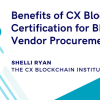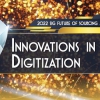Forty-seven years ago, J.C.R. Licklider had a vision that the entire world could be connected through an “intergalactic computer network”, allowing users to access programs and data from any site, from anywhere and at any time. Today, this vision has evolved into a reality, and echoes similarities to what we call “cloud computing.”
Cloud computing is a massively growing market, particularly among contact centres. In fact, the cloud-based contact centre market is expected to grow from $4.68 billion in 2015 to $14.7 billion by 2020. That’s a CAGR of 25.7 per cent. Contrast that to most analyst forecasts of on-premises contact centre growth at about four per cent over the same period (and declining).
This massive shift to the cloud has presented a dizzying array of contact centre options for CIOs. And one size does not fit all when it comes to cloud customer engagement solutions. Underlying architectures vary greatly and have major implications relative to security, availability, functionality, customisation, speed and innovation.
The following are four cloud architectures and their associated attributes.
1. Private Cloud
This model appeals to those wanting certain cloud benefits – increased agility, virtualised operations, economies of scale, and a more simplified, manageable IT environment – but either aren’t ready, or simply don’t want to move to a public cloud model. It also appeals to those requiring the highest level of customisation.
2. Single Tenant Public Cloud
Unlike private clouds, public clouds support multiple customers on common platforms. What’s unique about the single tenant model is that each customer has its own separate virtual instance of the contact centre application. This provides a highly secure environment, the freedom to customise applications, and control over the timing of updates – outside of busy seasons, for example. This model appeals to organisations with highly stringent security, compliance, functionality, customisation and control requirements.
3. Monolithic Multitenant Public Cloud
Originally designed for cost-conscious contact centres with basic needs over 10 to 15 years ago, these older cloud solutions require that multiple customers use a single monolithic contact centre application. This means they offer limited innovation, scale and reliability. A failure in one area can have a devastating impact in other areas, resulting in service outages for many or even all customers. This model appeals to companies with less mission-critical centres and moderate functionality requirements.
4. Microservice Multitenant Public Cloud
Revolutionary new contact centre cloud platforms are emerging that divide applications into hundreds of independent microservices that are distributed across massive public cloud infrastructures such as Amazon Web Services (AWS). One microservice might handle outbound dialling, while another routes incoming customer calls. A failure in one microservice has no impact on the other, providing unsurpassed reliability. Microservices are independently scaled to dynamically adjust to any area needing more resources. New and improved microservices are continuously added to the mix, with zero downtime, providing rapid innovation and modern user experiences.
Gone are the days of 12-to-18-month upgrade cycles. Code pushes are made weekly and sometimes daily. Applications built on these modern microservice (or Cloud 2.0) platforms are quick to deploy, simple to use and easily learnable. This model appeals to contact centres whose priority is delivering the most innovative functionality as fast as possible – together with uncompromised reliability and security, and the ability to cost-effectively scale up and down quickly.
Evaluating the Options
As is clear from the above, each architecture is very different. The future is definitely moving in the direction of the microservice cloud model. That’s because contact centres are increasingly being driven to innovate and adapt faster. With digital disruption in full swing, they face a choice: disrupt or be disrupted.
What’s imperative for CIOs to understand is that many monolithic multitenant solutions are being marketed as modern 2.0 cloud platforms. That’s far from the truth. The only way to deliver a true 2.0 cloud platform is to develop it from scratch using a microservice architecture and modern cloud technologies and methods. Don’t be fooled. Look under the hood and ensure your vendor has done the hard work that needs to be done – typically, a total re-start.
Conclusion
While not all contact centres can immediately throw out their existing systems, they must start evaluating and incorporating modern cloud architecture. The good news is that validation and initial progress can be achieved quickly as these services are relatively inexpensive, fast to deploy, and easy to use.
Global digital disruption is upon us. CIOs must choose: reinvent your contact centre now, or wait and risk obsolescence.






